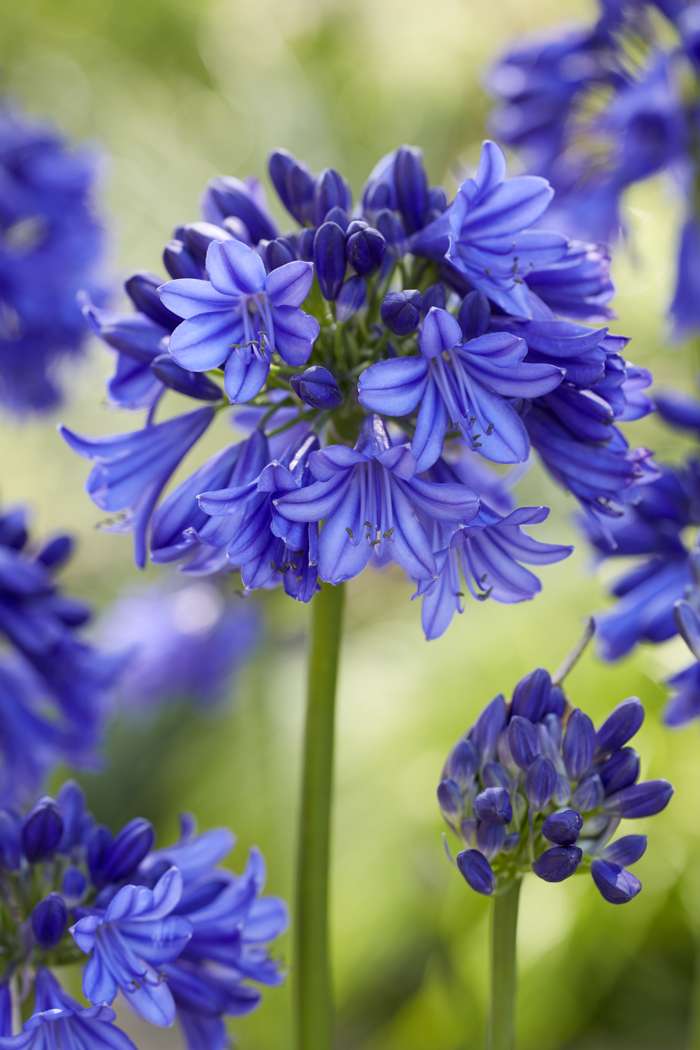Agapanthus Care Tips for Lush and Vibrant Flowers
Agapanthus Care Tips for Lush and Vibrant Flowers
Blog Article
Grasping the Art of Agapanthus Treatment: Essential Actions for Healthy And Balanced Development and Dynamic Blooms
In the realm of cultivation, the farming of agapanthus stands as a gratifying venture for those that look for to nurture these sophisticated blooming plants. With their striking blossoms and stylish foliage, agapanthus has actually caught the interest of gardeners worldwide. Nevertheless, accomplishing optimal growth and lively blossoms calls for a nuanced approach that encompasses numerous crucial actions. From picking the best selection to mastering trimming methods, the trip in the direction of cultivating flourishing agapanthus plants is multifaceted and holds the key to opening the full potential of these herb treasures.

Picking the Right Agapanthus Range

When choosing the right Agapanthus selection for your yard, take into consideration factors such as environment viability, flower color, and growth practice. Furthermore, think about the environment in your region to make certain the Agapanthus variety you choose can grow in your specific problems. Comprehending the development habit of different Agapanthus varieties is essential for correct positioning within your garden.
Perfect Growing Problems
Thinking about the optimum ecological requirements is important for effective Agapanthus cultivation. Agapanthus plants are delicate to cold temperatures and should be secured from frost throughout wintertime months.
To ensure healthy development and vibrant flowers, plant Agapanthus light bulbs at a deepness of about 2-4 inches and room them 8-12 inches apart. Adding raw material, such as garden compost, to the soil can improve drain and fertility, advertising durable origin development. Mulching around the base of the plants assists preserve wetness and subdues weed development. Routine watering is crucial, especially during the growing period, to maintain the dirt consistently damp yet not waterlogged.
Watering and Feeding Tips
Maintaining correct moisture degrees and giving crucial nutrients are essential components in the care routine for Agapanthus plants. When it comes to watering Agapanthus, it is critical to strike an equilibrium. If overwatered, these plants choose continually moist soil yet are vulnerable to root rot. During the growing season, water deeply when a week, guaranteeing the soil is well-draining to stop waterlogging. In hotter environments or throughout durations of drought, more regular watering may be necessary to keep the soil evenly moist. Nonetheless, lower watering in the winter months to protect against waterlogged problems.
Feeding Agapanthus is important for advertising healthy development and prolific flowers. Apply a well balanced plant food, such as a 10-10-10 formula, in the early spring as brand-new growth arises. Repeat this application every 6-8 weeks throughout the expanding season. Prevent extreme fertilizing, as it can cause rich vegetation at the expense of blossoms. Always adhere to the producer's directions for find this proper dilution and application techniques. By following these watering and fertilizing suggestions, you can ensure your Agapanthus plants prosper and produce dynamic, durable flowers.
Pruning Techniques for Agapanthus
Trimming Agapanthus plants at the suitable times and with correct methods is important for preserving their wellness and advertising optimal development and flowering. The optimal time to prune Agapanthus is in late winter months or very early spring prior to brand-new growth arises.
For flowered stems, wait till the flowers have withered and after that cut them back to the base. This not just cleans the plant's look but additionally encourages the development of brand-new blossom buds. Deadheading invested flowers can additionally redirect the plant's power right into creating even more blooms rather than setting seeds. Nonetheless, if you wish to accumulate seeds for breeding, leave some flowers to mature and dry on the plant.
Keep in mind to utilize clean, sharp devices to make precise cuts and reduce the risk of introducing illness. Agapanthus. Regular pruning will assist maintain your Agapanthus looking healthy and neat while ensuring a plentiful display screen of attractive blossoms
Handling Common Bugs and Conditions
After making certain proper pruning methods for Agapanthus, it is important to resolve common parasites and illness that can influence the wellness and vitality of these plants. Agapanthus plants are usually durable but can still succumb to specific issues. One typical bug that affects Agapanthus is the Agapanthus gall midge. This little, orange fly lays its eggs in the foliage, bring about distorted development and flower buds that fall short to open. To combat this parasite, trim and damage any afflicted plant parts and take into consideration utilizing insecticidal soap.
Additionally, Agapanthus plants can experience from root rot if they are planted in inadequately draining soil. By being alert and taking timely activity versus diseases and pests, you can help your Agapanthus plants grow and create vibrant blooms. Agapanthus.

Verdict
To conclude, grasping the art of agapanthus care includes choosing the ideal selection, giving excellent growing problems, correct watering and feeding, suitable pruning strategies, and addressing usual parasites and conditions. By complying with these crucial steps, you can guarantee additional info healthy and balanced development and dynamic blooms for your agapanthus plants. Remember to on a regular basis monitor and maintain your plants to promote their overall well-being and long life.
To guarantee healthy and balanced growth and lively blossoms, plant Agapanthus bulbs at a depth of regarding 2-4 inches and area them 8-12 inches apart. By following these watering and fertilizing pointers, you can guarantee your Agapanthus plants thrive and generate vivid, long-lasting blooms.
One typical bug that impacts Agapanthus is the Agapanthus gall midge. Furthermore, Agapanthus plants can click here to read endure from root rot if they are planted in poorly draining soil. By adhering to these important steps, you can make certain healthy and balanced development and vibrant blooms for your agapanthus plants.
Report this page